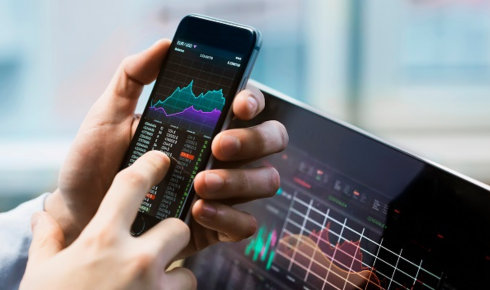A Demat account and trading account are required to be opened for trading in one or several different instruments, such as equity, bond, or any exchange-traded fund or derivative. The world is constantly developing with new technologies, with some innovations regarding making physical certificates or manual transactions absolutely unnecessary. It is rather with the innovations in account opening and trading via the apps in the name of Demat App and Trading App that bring the investor stock market experience in a hassle-free, safe, and rapid manner without paper.
What is a Demat Account?
It is the account where securities are dematerialized from holding physical certificates. The securities have all been bonded under electronic custody, like shares, bonds, or mutual funds.
The maintenance of the Demat Account is made possible through two electronic infrastructures in India, which are offered by the two central depositories, namely, NSDL (National Securities Depository Limited) and CDSL (Central Depository Services Limited). Depository Participants (DPs) provide an access road towards such facilities, which could be banks and brokers.
Key features of a Demat Account
Basic functionalities involved in the dematerialised account include:
Keeping securities electronically.
Automatic credit of dividends, bonus shares, and rights issues.
Smooth transfer of securities while buying and selling.
What is a Trading Account?
An account where trades of selling or buying securities are performed directly on the stock exchanges, that is, NSE and BSE. The linking of a bank account and the Demat Account. When there is a purchase of goods, the cash will be debited from the bank account and credited to the client’s Demat Account. When ownership transfers via selling, the Demat Account shall remove the securities, and the proceeds shall reappear in the bank account.
How can applications be used to open demat and trading accounts?
Step 1: Choose the Broker or Depository Participant (DP)
Here, select from among the SEBI-registered brokers (or DPs) that either have or provide you with the option of getting the Demat Account App and Trading Account App; many are either all-inclusive or akin to these.
Step 2: Download the Application
Download from the go-to app store the official application; always check if fake.
Step 3: Complete Registration
Fill in all the details such as:
Name, date of birth, and contact address: as needed.
Permanent account number (PAN).
Aadhaar.
Bank account information: same.
Step 4: Upload Documents
Digitally upload the following copies:
Mandatory PAN card.
identity and address proof: Aadhaar card, passport, or voter ID identity and address proofs.
Bank statement or canceled check.
Passport-size photograph.
Step 5: Verification
Verification can be done either in person or by video KYC. Here, you may present your original documents for KYC purposes.
Step 6: Activation of Account
The respective trader would be established with credentials for logging in and trading once both verification and activation of the Demat and Trading Accounts have been carried out.
Characteristics Opening Rates with Applications
Digital KYC: Finish the whole verification without even venturing out to visit a physical branch with documents.
Paperless: Upload all documents online.
Real-time Monitoring: Trades, holdings, and portfolio activity tracked from virtually anywhere. Integrated Access: Most apps combine Demat, Trading, and bank accounts on one platform. Notifications: Immediate alert on order execution, price change, and corporate action.
Costs Associated with Holding Demat and Trading Accounts
While apps promise to make the entire process easier, they may still have the following expenses involved:
Account Opening Fees: Some do not charge fees for opening accounts; some charge a fee for it.
Annuity Maintenance Charges, assessed yearly for maintaining the Demat Accounts.
Brokerage Charges: Fees for buy-and-sell orders executed by the Trading Account Application.
Transaction Charges: Costs that include statutory and other types of costs, such as Securities Transaction Tax (STT), GST, SEBI charges, and Exchange Fee. Default safety in the Demat App and Trading App security from deception in digital spaces:
Login and Transaction Verification Based on Two-Step Authentication (2FA).
Sensitive information is protected from external exposures during those times by encrypted data transfer to transfer that data.
Regularly open account statements to detect unauthorized activities in the account.
Depositories and Other Associated Acts
NSDL and CDSL keep the electronic records of securities.
SEBI Regulation: Securities and Exchange Board of India shall control all brokers, Depository Participants, and Trading Practices.
Protection of the Investor: Brokers usually provide contract notes, receipts, and account statements to highlight transactions and activity initiated therein.
Conclusion:
Opening a Demat and Trading account via mobile applications has become the trend today, with the public momentarily participating in the Indian securities market. In a nutshell, investors use a Demat account app to track their holdings and benefit from corporate actions, but rely on a Trading account app to place orders as well as monitor market action in real time. This way, it is possible to run the accounts with compliance and safekeeping because by using these two digital instruments, it ensures secure and paperless access to the markets.

